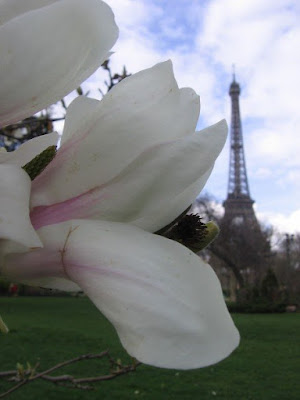
My mentor, Fatouma Gulum, was able to fit me into her busy schedule to teach me how to create these Middle Eastern delights a few months ago (I'm sorry that I didn't put up the recipes sooner; I've been very caught up in college applications for the past few months).
Backlava
My first lesson was the baklava, which we made from scratch. My mentor didn't use standard measurement - more like proportions. I think that precise measurements are not vital in this recipe, rather, techniques and tricks take the forefront.
Phillo Ingredients
3 measures of all-purpose flour (we used a medium-small bowl for this measure)
4 sticks of melted butter
a pinch of salt
water
Syrup Ingredients
4 c sugar
6 c water
2 c honey
orange blossom water (optional)
Filling Ingredients
.9 lbs of walnuts
1.7 lbs peeled almonds
sugar
Extra:
Ready melted butter to spread between layers
whole, peeled almonds - 1 almond for each piece of baklava
Preparation of Dough: Put flour in a tray and pour melted butter onto the flour. Add a pinch of salt and knead it. Add water until it reaches a dough-like consistency. Put aside half of the dough (to prevent it from drying out). Divide the dough into small, fist-sized pieces and roll them out into approx. 4 inch wide strips.
Preparation of Syrup: Meanwhile, in a medium saucepan, pour in sugar and cook until it browns a little, then add the water. Let the sugar dissolve, and the mixture come to a boil and cook. Add the honey (and opt. orange blossom water). Allow the whole mixture to boil for awhile.
Preparation of Filling: Process the walnuts and almonds until they're coarsely ground - the baklava should have a delicate crunch when bitten in to. Add some sugar to the the processed nuts. Set aside.
Assembling the Baklava:Using a pasta machine, thin the strips of dough starting at setting 2 and skipping one setting each time, until they have gone through setting 8. Brush some butter in an approx. 1 inch deep pan. Lay a layer of strips long-ways on the pan, overlapping a little (to prevent holes). Allow around 1/2 inch to hang off the top and bottom edge and let the excess length of the strips hang off the pan (they will be utilized later). Butter the previous layer before starting a new one (the butter prevents the layers from combining into one thick layer of dough). Make the strips of the fourth layer run perpendicular to the other layers (switch the direction of the strips for this layer). Use the excess overhangings to cover small gaps, instead of thinning a whole new strip. After the seventh layer, spread the filling evenly over the 7th layer without any butter. Configure 7 more layers above the filling, switching directions on the 4th layer again. On the last level, butter the top and cut off all unused overhanging strips. With a butter knife, go around the edge of the pan and tuck in the dough, outlining the outer pieces of baklava. Using a straight-edge, cut the raw baklava into even strips, longways across the pan. Next, cut diagonals in each row, forming diamond-shaped baklava pieces (cutting diamonds instead of squares is more efficient - more fit into the rectangular pan). Stick a whole, peeled almond into each piece of baklava (it holds the layers together). Bake at 375 degrees until golden brown. Then pour the hot syrup over the baklava and allow it to be absorbed. Cool to room temperature and enjoy!
It took us all day to prepare but the outcome was satisfying and delicious!
Backlava Balls
These coconut covered truffle-resembling balls are my mentor's invention. To make them, you simply take the edges of the baklava and, instead of gorging them down in a guilty effort to prevent waste, you process the strips until they take a moldable consistency, mold them into balls, and roll them in coconut flakes. These are a good selection for those guests who prefer a less messy alternative to baklava.


































